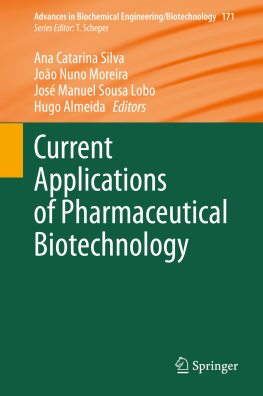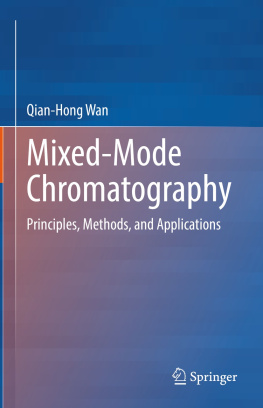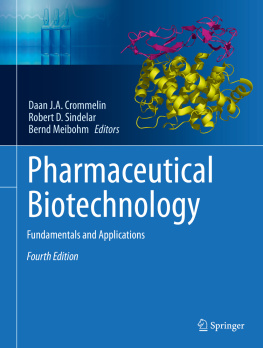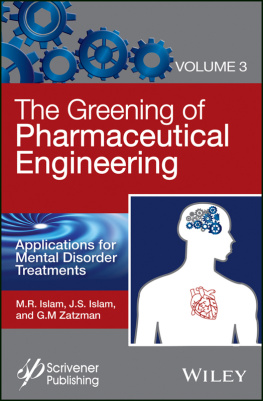Ana Catarina Silva - Current Applications of Pharmaceutical Biotechnology
Here you can read online Ana Catarina Silva - Current Applications of Pharmaceutical Biotechnology full text of the book (entire story) in english for free. Download pdf and epub, get meaning, cover and reviews about this ebook. year: 2020, publisher: Springer International Publishing, genre: Children. Description of the work, (preface) as well as reviews are available. Best literature library LitArk.com created for fans of good reading and offers a wide selection of genres:
Romance novel
Science fiction
Adventure
Detective
Science
History
Home and family
Prose
Art
Politics
Computer
Non-fiction
Religion
Business
Children
Humor
Choose a favorite category and find really read worthwhile books. Enjoy immersion in the world of imagination, feel the emotions of the characters or learn something new for yourself, make an fascinating discovery.
- Book:Current Applications of Pharmaceutical Biotechnology
- Author:
- Publisher:Springer International Publishing
- Genre:
- Year:2020
- Rating:5 / 5
- Favourites:Add to favourites
- Your mark:
- 100
- 1
- 2
- 3
- 4
- 5
Current Applications of Pharmaceutical Biotechnology: summary, description and annotation
We offer to read an annotation, description, summary or preface (depends on what the author of the book "Current Applications of Pharmaceutical Biotechnology" wrote himself). If you haven't found the necessary information about the book — write in the comments, we will try to find it.
Current Applications of Pharmaceutical Biotechnology — read online for free the complete book (whole text) full work
Below is the text of the book, divided by pages. System saving the place of the last page read, allows you to conveniently read the book "Current Applications of Pharmaceutical Biotechnology" online for free, without having to search again every time where you left off. Put a bookmark, and you can go to the page where you finished reading at any time.
Font size:
Interval:
Bookmark:
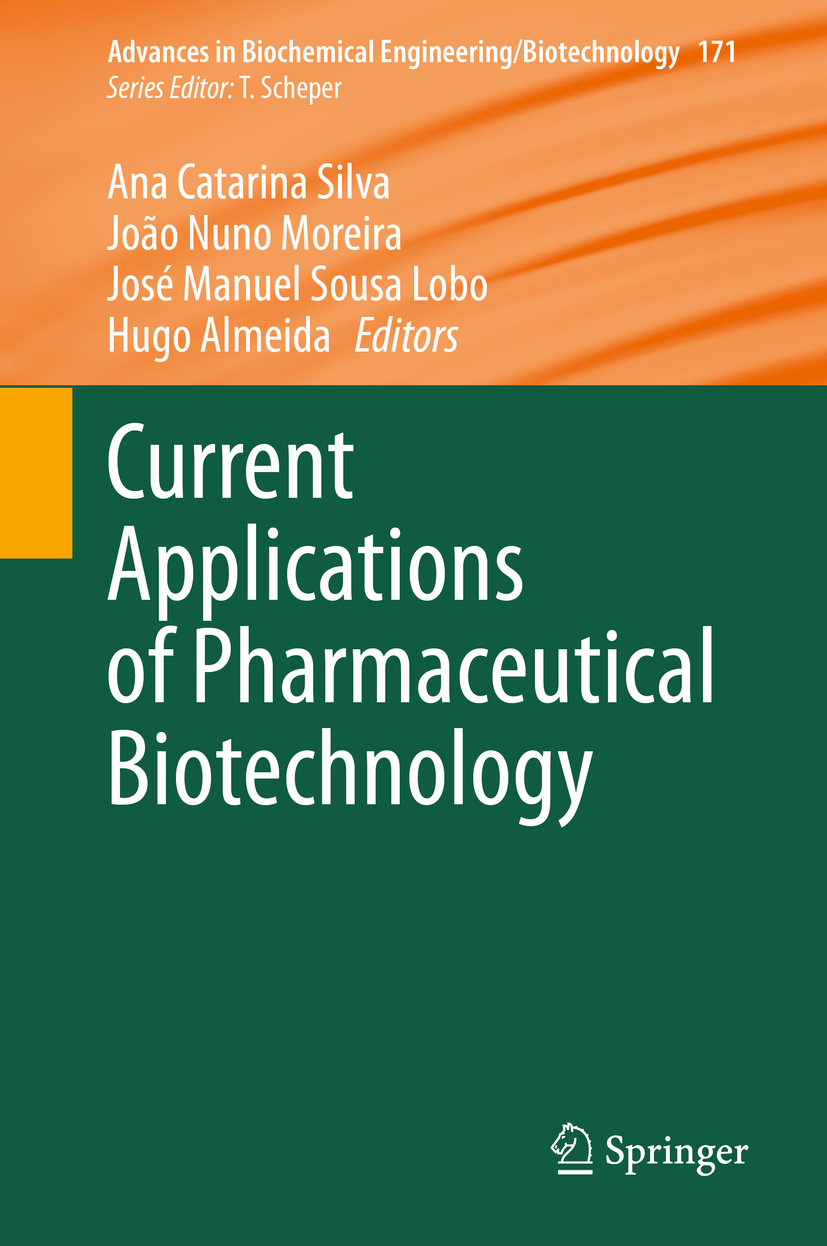
Aims and Scope
This book series reviews current trends in modern biotechnology and biochemical engineering. Its aim is to cover all aspects of these interdisciplinary disciplines, where knowledge, methods and expertise are required from chemistry, biochemistry, microbiology, molecular biology, chemical engineering and computer science.
Volumes are organized topically and provide a comprehensive discussion of developments in the field over the past 35 years. The series also discusses new discoveries and applications. Special volumes are dedicated to selected topics which focus on new biotechnological products and new processes for their synthesis and purification.
In general, volumes are edited by well-known guest editors. The series editor and publisher will, however, always be pleased to receive suggestions and supplementary information. Manuscripts are accepted in English.
In references, Advances in Biochemical Engineering/Biotechnology is abbreviated asAdv. Biochem. Engin./Biotechnol.and cited as a journal.
More information about this series at http://www.springer.com/series/10

This Springer imprint is published by the registered company Springer Nature Switzerland AG.
The registered company address is: Gewerbestrasse 11, 6330 Cham, Switzerland
Biopharmaceuticals have been showing high therapeutic potential, especially for medical conditions associated with unmet medical needs. Examples of these conditions include cancer and autoimmune, metabolic, dermatological, neurological, and genetic diseases. Thereby, current clinical relevance of biopharmaceuticals is unquestionable. Since the 1980s, several biological medicines have been approved and, due to patents expiration, many biosimilars have been marketed.
Manufacture and formulation of biopharmaceuticals comprising therapeutic proteins generated by DNA recombination is challenging. Depending on the proteins molecular weight and structure complexity, industrial manufacturing processes have employed different host cells. Furthermore, biopharmaceuticals formulation is fundamental to achieve an effective medicine, being necessary to stabilize the protein conformation, enabling its efficacy while avoiding immunogenicity and other safety problems. Commercial biopharmaceuticals are typically for parenteral administration, although several efforts have been made to find alternative administration routes and/or new delivery systems enabling improved pharmacokinetic properties and better patient compliance.
Therapeutic applications of biopharmaceuticals are highly diverse and include active substances such as monoclonal antibodies, cytokines, growth factors, hormones, blood products, therapeutic enzymes, as well as vaccines, cellular therapies and products of gene therapy. In respect of biopharmaceuticals (including biosimilars and orphans), the European Medicines Agency (EMA) and the Food and Drug Administration (FDA) have approved so far 89 cytokines, 78 hormones (insulin, glucagon, growth hormone, gonadotropins, and thyroid-stimulating hormone and parathyroid hormone), 49 blood products (blood factors, anticoagulants, and thrombolytic agents), and 22 therapeutic enzymes. Current research has been also focused on identifying new clinical applications for existing therapeutic proteins.
A number of different advances in the development, manufacturing, and characterization of vaccines have enabled the prevention of infections and promoted human health worldwide. Approved recombinant vaccines include Shingrix, Ebola (Ad5-EBOV), meningococcal subgroup B, human papilloma virus (HPV), dengue, enterovirus 71 (EV71), and hepatitis B (HBV), while vaccines against rVSV-ZEBOV Ebola, respiratory syncytial virus (RSV), and malaria are under clinical evaluation.
In addition to biopharmaceuticals and vaccines, advanced therapy medicinal products based on the use of cells, tissues, or genes offer new therapeutic possibilities. For example, cell-based therapies have been used in regenerative medicine, disease modelling, and drug screening studies. This has also constituted an opportunity to engineer new manufacturing concepts as 3D bioprinting technology, which have succeeded in generating living tissues and organs from a combination of cells, biomaterial bioinks, and growth factors. Examples of bioprinted tissues include nerve, skin, heart, bone, cartilage, skeletal muscle and soft tissues such as liver, cornea, intestine, and bladder.
Font size:
Interval:
Bookmark:
Similar books «Current Applications of Pharmaceutical Biotechnology»
Look at similar books to Current Applications of Pharmaceutical Biotechnology. We have selected literature similar in name and meaning in the hope of providing readers with more options to find new, interesting, not yet read works.
Discussion, reviews of the book Current Applications of Pharmaceutical Biotechnology and just readers' own opinions. Leave your comments, write what you think about the work, its meaning or the main characters. Specify what exactly you liked and what you didn't like, and why you think so.

